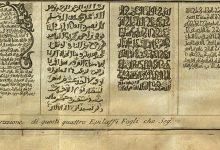In the realm of modern Arabic poetry, the concept of renewal (تجديد) stands as a profound and evolving theme, reflecting the intricate relationship between tradition and innovation. This renewal manifests through various dimensions, from thematic explorations to stylistic innovations, marking a dynamic evolution from classical forms to contemporary expressions.
Thematic Renewal
Modern Arabic poetry’s thematic renewal is rooted in its response to socio-political changes, cultural shifts, and the challenges of modernity. Beginning in the late 19th and early 20th centuries, poets such as Ahmad Shawqi and Hafez Ibrahim sought to break away from traditional poetic conventions, advocating for themes of nationalism, individualism, and social critique. This period, known as the Nahda (Arabic Renaissance), laid the groundwork for future poets to explore new themes with a sense of cultural and literary rejuvenation.
Cultural Revival and Identity
The quest for cultural revival and identity has been a central theme in modern Arabic poetry’s renewal. Poets like Mahmoud Darwish and Adonis (Ali Ahmad Said Esber) explored the complexities of Arab identity, diaspora, and the struggle for independence. Darwish, in particular, infused his poetry with Palestinian nationalism and resistance, resonating deeply with the Arab world’s quest for self-determination.
Linguistic and Stylistic Innovations
Linguistic and stylistic innovations have played a pivotal role in rejuvenating Arabic poetry. Poets in the mid-20th century, influenced by Western literary movements and avant-garde experimentation, introduced free verse, surrealism, and symbolism into Arabic poetry. This departure from traditional meters and rhyme schemes allowed for greater flexibility in expression and a more nuanced exploration of personal and universal themes.
Women’s Voices and Feminist Discourses
The inclusion of women’s voices and feminist discourses has significantly contributed to the renewal of Arabic poetry. Poets like Nazik al-Malaika and Badr Shakir al-Sayyab challenged patriarchal norms through their poetry, addressing issues of gender equality, identity, and societal expectations. Their work not only expanded the thematic scope of Arabic poetry but also paved the way for future generations of women poets to assert their narratives and perspectives.
Urbanization and Globalization
Urbanization and globalization have also influenced the renewal of Arabic poetry, shifting focus from rural landscapes and traditional settings to urban life, cosmopolitanism, and interconnectedness. Poets like Nizar Qabbani explored love and relationships within the context of modern cities, reflecting the complexities of contemporary Arab society and the impact of global trends on local cultures.
Digital Age and Technological Impact
The digital age has introduced new avenues for poetic expression and dissemination, furthering the renewal of Arabic poetry. Social media platforms and online journals have democratized access to poetry, allowing emerging poets to reach global audiences instantaneously. This digital landscape has fostered a vibrant community of poets experimenting with multimedia formats, interactive poetry, and collaborative projects, revitalizing traditional forms through innovative digital practices.
Environmental Consciousness and Ecopoetics
In recent years, there has been a growing trend towards environmental consciousness and ecopoetics in Arabic poetry. Poets like Adonis and Mourid Barghouti have addressed ecological issues, climate change, and humanity’s relationship with nature through their verse. This thematic renewal reflects broader global concerns and underscores the role of poetry in advocating for environmental stewardship and sustainable living.
Conclusion
The concept of renewal in modern Arabic poetry encapsulates a continuous process of redefining tradition, embracing innovation, and responding to contemporary realities. From thematic explorations of identity and societal change to stylistic innovations and digital transformations, Arabic poetry continues to evolve, resonating with diverse audiences and reaffirming its relevance in an ever-changing world. As poets navigate the complexities of the 21st century, the spirit of renewal remains integral to their artistic vision, ensuring that Arabic poetry remains a dynamic and enduring expression of cultural heritage and human experience.

